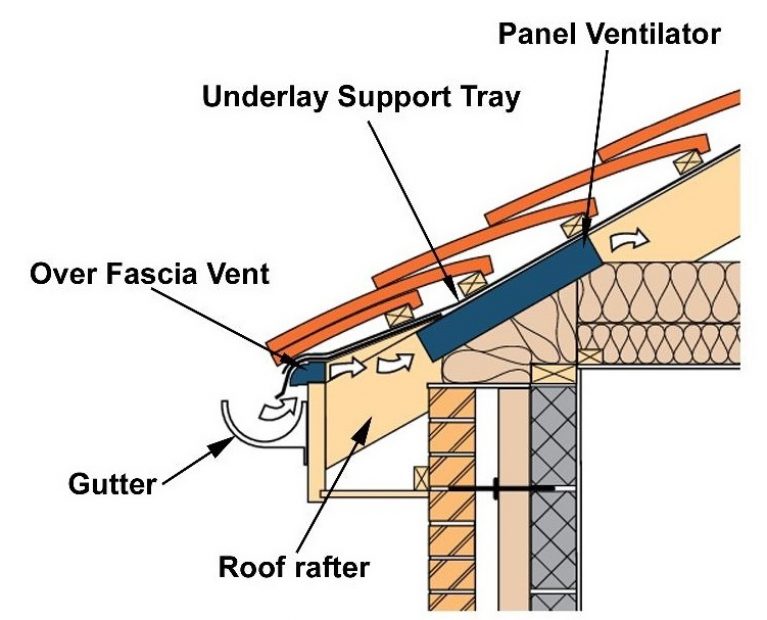How to install roof ventilation?

When installing or replacing a roof for a property it is important to consider what ventilation you are going to install in order to provide good airflow to the roof space.
In this Wonkee Donkee guide to roof ventilation, we explain what is roof ventilation, how roof ventilation works and the issues that can occur if you don’t create a good airflow in your roof space.
Why is it important to have roof ventilation?
The majority of roof ventilation systems are extremely easy to install, affordable and are very discreet. They also provide a number of benefits and require very little maintenance. By installing a roof ventilation system within a property you create a steady airflow through the top of the building (which is usually the attic space).
The way that roof ventilation systems work is that it allows for air to escape the roof area, which is replaced by fresh air from outside the property. This creates a continuous airflow of fresh air into the roof space and the removal of stale or moisture-filled air from within the property.
This continuous airflow provides many benefits including; better management of the properties temperature, the prevention of condensation build-up and a better quality of air in the property.
You may be questioning how letting air escape your property can help control the temperature and reduce your energy bills but it is true. The first way it does this is in Summer months when the air in the house is warm it will rise to the top of the house and pool.
A good roof ventilation system will help remove this warm air for the house leading to better circulation around the house and a cooler temperature. This reduces the need to use electric fans or air conditioning units and thus lowers your utility bills. But, it is not just an advantage when the weather is warm outside. In colder climates, good roof ventilation is important in order to remove stale warm air as well as warm moisture-filled air out of the property.
That moves us on nicely to the second benefit that we mentioned of effectively removing condensation and preventing it from build-up in the roof space. The build-up of moisture in a roof space can cause serious structural problems and is also a potential health risk to people who frequently spend time in that area. Left unattended in the short term will cause damp or mould and mildew to grow, whilst long term neglection can cause rotting and compromise the structure of the roof.
How does Roof Ventilation Work?

In the last section, we explained that roof ventilation is important in order to create a natural airflow in a roof space. However, how does roof ventilation actually work? Don’t worry, our roofing experts at Wonkee Donkee cover all of this below.
The first important thing to understand is that roof ventilation systems create a natural airflow through the roof space, and the keyword in that sentence is ‘natural’. The creation of a natural airflow means that roof ventilation systems need minimal maintenance. It also means that there are no running costs to complete important tasks like removing condensation like other options such as dehumidifiers.
But how is this natural airflow created? This varies slightly depending on the roof ventilation system that you install on the property, but it either uses the stack effect, wind effect or both. Below we explain how both the stack effect and wind effect work within a property that uses a roof ventilation system.
Stack Effect
As everyone knows, hot air rises. But when this occurs in a property it can build-up on the underside of the roof which causes pools of high-pressure at the roof’s highest points. The reason this is called the stack effect is due to the fact that the air stacks on top of itself from the lowest temperature up to the highest.
This hot air builds up in the attic space with nowhere to go, this is where a roof ventilation system comes in. The vents provide an opportunity for warm air to escape the house which is then replaced with cooler air from outside. This may sound like a negative as you are losing heat but what it actually does is help keep the house at a good temperature. It also helps remove warm air that is filled with moisture from building up in the roof space and replaces it with the fresh air from outside which is of a higher quality.
Wind Effect
You may have guessed from the name, wind effect utilises the wind in order to ventilate your roof space. As the wind from outside hits the house, some will enter the property via the roof vents which forces existing air out of the roof space. This creates a natural circulation of air, removing stale or moisture-filled air from your attic space whilst inputting fresh higher-quality air.






